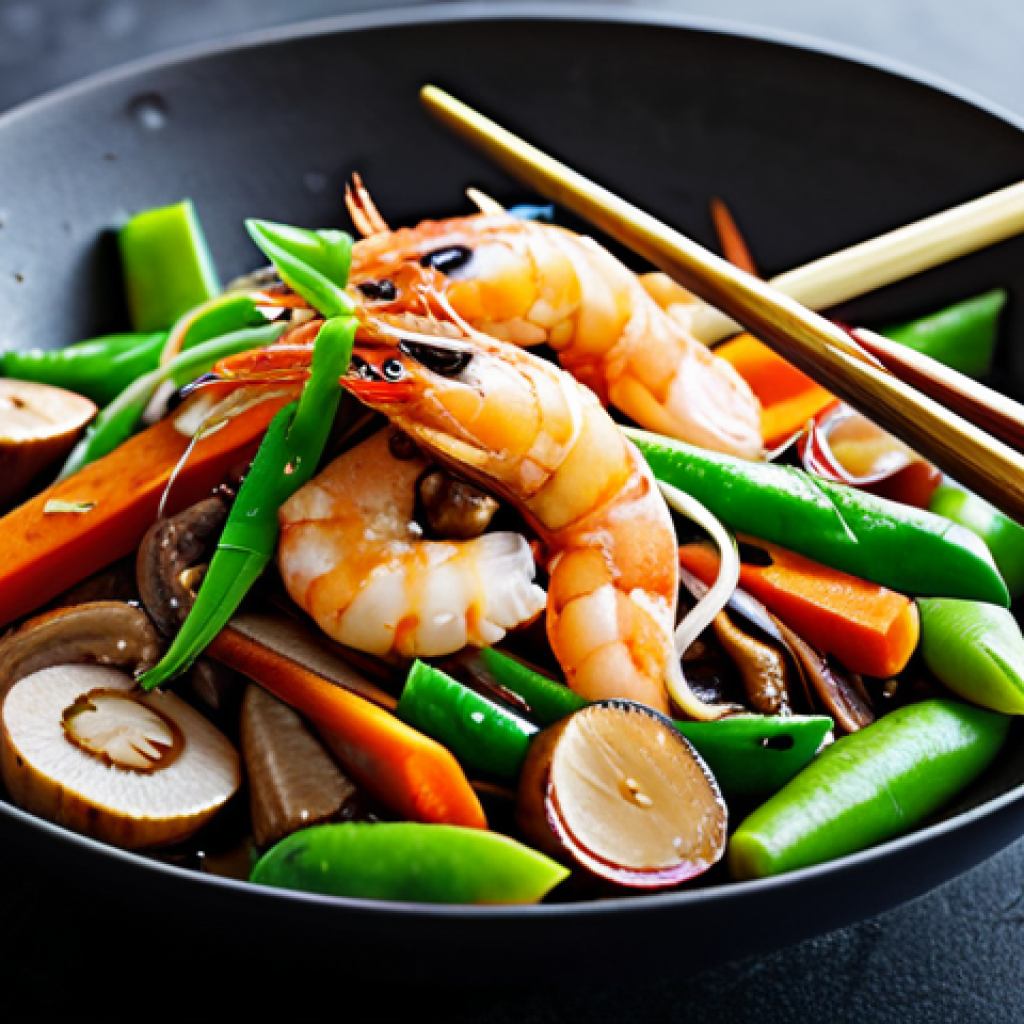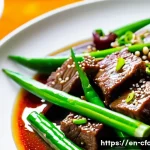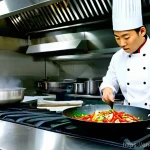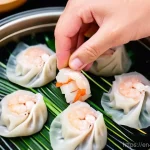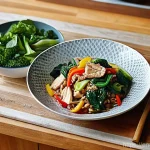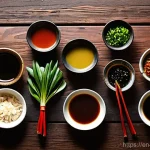Okay, here’s a blog-style introduction to a recipe for Palbochae (Eight Treasure Vegetables):Palbochae, or Eight Treasure Vegetables, is a dish that always feels like a celebration on a plate.
The vibrant colors and diverse textures, from the crunch of the vegetables to the tender seafood, create a symphony of flavors that dance in your mouth.
Honestly, I remember the first time I had it, I was blown away by how something so seemingly simple could be so incredibly satisfying. Over the years, I’ve experimented with various recipes, tweaking them here and there to create my perfect version.
And now, with the rise of plant-based proteins and an increasing focus on sustainable eating, I’ve even adapted it for vegetarian and vegan friends! It’s a dish that’s stood the test of time, always adapting and evolving to meet modern tastes.
Today, we will explore this culinary adventure together. Let’s dive in and learn more about it in the article below.
Okay, here’s the blog post:
Unlocking Palbochae: Your Ingredient Adventure Begins
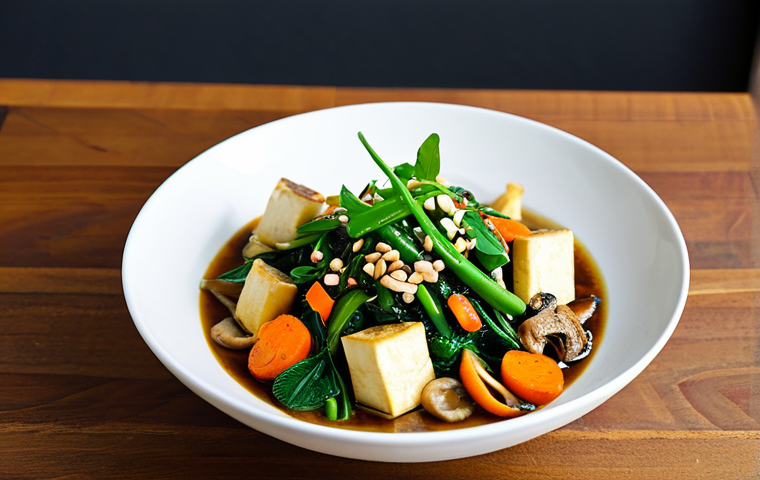
Forget just listing ingredients! Think of sourcing them as the first act in your culinary drama. The quality of what you choose profoundly affects the final outcome. I remember one time I used canned bamboo shoots instead of fresh, and the dish lacked that satisfying crunch. Never again! So, let’s talk specifics.
The Seafood Stars
Shrimp and squid are the quintessential seafood duo. Opt for wild-caught shrimp if you can, they have a cleaner, sweeter taste. When it comes to squid, look for pieces that are firm and pearly white. If they smell fishy or are slimy, steer clear! A little trick I learned from a chef friend: soak the squid in milk for about 30 minutes before cooking to make it extra tender. Trust me, it works wonders!
The Vegetable Rainbow
Here’s where the “Eight Treasure” moniker comes to life! You’ll want to create a vibrant mix of textures and flavors. Common choices include bamboo shoots (fresh is best!), shiitake mushrooms (the meaty kind), carrots (for sweetness and color), snow peas (for that lovely crunch), and gai lan (Chinese broccoli). Don’t be afraid to experiment, though! I sometimes add baby corn or water chestnuts for extra texture. Pro-tip: slice all your veggies uniformly so they cook evenly.
Mastering the Stir-Fry: Techniques and Timing
Stir-frying is more than just tossing ingredients in a pan; it’s a dance of heat and timing. The key is to maintain high heat and move the ingredients constantly to prevent burning. My first attempt at Palbochae resulted in a smoky mess because I didn’t have my wok hot enough. Lesson learned! Now, I preheat my wok until it’s almost smoking, then add the oil. This ensures that everything cooks quickly and evenly, retaining its crispness.
Wok Hei: The Soul of Stir-Fry
“Wok Hei” is a Cantonese term that refers to the smoky, slightly charred flavor imparted by a hot wok. It’s the essence of a good stir-fry. To achieve it, make sure your wok is screaming hot, add your ingredients in batches to avoid overcrowding, and keep everything moving. Don’t be afraid of a little smoke! That’s the wok hei magic happening.
The Order of Operations
Adding ingredients in the right order is crucial. Start with the aromatics (garlic and ginger), then add the seafood, followed by the vegetables that take longer to cook (like carrots and bamboo shoots). Finally, add the quicker-cooking veggies (like snow peas) and the sauce. This ensures that everything is cooked to perfection without becoming soggy or overcooked.
Crafting the Perfect Sauce: Balancing Flavors
The sauce is what ties everything together. It needs to be balanced – a harmonious blend of savory, sweet, and umami. My secret? A touch of oyster sauce for that deep, rich flavor. But be careful not to overdo it, as it can easily overpower the other ingredients. I once made a batch of Palbochae where the oyster sauce was too strong, and it tasted like straight-up seafood. A good sauce is nuanced and complex, enhancing the other flavors without stealing the show.
The Soy Sauce Symphony
Soy sauce is the backbone of the sauce, but not all soy sauces are created equal. I prefer a good-quality light soy sauce for its delicate flavor and a touch of dark soy sauce for color. The combination adds depth and complexity to the sauce. Also, consider adding a splash of Shaoxing wine (Chinese rice wine) for added aroma and flavor. It elevates the dish to a whole new level.
Sweetness and Umami
A touch of sugar helps balance the savory flavors, while a pinch of white pepper adds a subtle heat. For umami, I rely on a combination of oyster sauce (mentioned earlier) and a tiny bit of MSG (monosodium glutamate). I know MSG gets a bad rap, but a tiny amount can really enhance the savory flavors. If you’re MSG-averse, you can substitute it with a dash of mushroom seasoning or nutritional yeast.
Vegetarian Palbochae: A Plant-Based Delight
Adapting Palbochae for vegetarians and vegans is surprisingly easy! The key is to find good substitutes for the seafood that still provide that umami flavor and satisfying texture. I’ve found that using a combination of tofu, mushrooms, and plant-based seafood alternatives works wonderfully.
Tofu Transformation
Firm or extra-firm tofu is your best bet. Press it well to remove excess water, then cube it and pan-fry it until golden brown. This gives it a nice, crispy texture that mimics the bite of seafood. You can even marinate the tofu in a mixture of soy sauce, ginger, and garlic before frying for extra flavor.
The Mushroom Magic
Mushrooms are a vegetarian’s best friend. Shiitake, oyster, and king oyster mushrooms all work beautifully in Palbochae. Their meaty texture and umami flavor make them a great substitute for seafood. I like to sauté them with a little bit of garlic and ginger to bring out their flavor before adding them to the stir-fry.
Plating and Presentation: Making it Picture-Perfect
Presentation matters! A beautifully plated dish is more appealing and appetizing. Think about the colors and textures of your Palbochae and arrange them artfully on the plate. I like to use a large, shallow bowl or platter to showcase the vibrant colors of the vegetables and seafood. Remember, we eat with our eyes first!
Garnish with Grace
A sprinkle of toasted sesame seeds and a scattering of fresh cilantro leaves add a touch of elegance to the dish. You can also add a drizzle of sesame oil for extra flavor and sheen. Be creative and have fun with it!
Serving Suggestions
Palbochae is delicious on its own, but it also pairs well with steamed rice or noodles. For a more complete meal, you can serve it with a side of dumplings or spring rolls. It’s also a great dish to bring to potlucks or dinner parties – it’s always a crowd-pleaser!
Palbochae: Health Benefits & Nutritional Information
Beyond its delicious taste and vibrant appeal, Palbochae offers significant health benefits. The combination of various vegetables and seafood provides a wealth of vitamins, minerals, and antioxidants, contributing to overall well-being. As someone who’s conscious about healthy eating, I’m always looking for dishes that are both delicious and nutritious, and Palbochae definitely fits the bill.
Rich in Vitamins and Minerals
The diverse range of vegetables in Palbochae ensures a high intake of essential vitamins and minerals. Carrots provide beta-carotene, which is converted into Vitamin A and is crucial for eye health and immune function. Snow peas are a great source of Vitamin C and fiber. Shiitake mushrooms contribute B vitamins and minerals like selenium, known for its antioxidant properties.
Lean Protein Source
Seafood such as shrimp and squid offers a lean source of protein, vital for muscle repair and growth. Protein also helps in maintaining satiety, which can aid in weight management. The protein from seafood is easily digestible and provides essential amino acids that the body needs but cannot produce on its own.
| Nutrient | Amount (per serving) | % Daily Value |
|---|---|---|
| Calories | 250 | – |
| Protein | 20g | 40% |
| Fat | 10g | 15% |
| Carbohydrates | 20g | 7% |
| Fiber | 5g | 20% |
| Vitamin A | 2500 IU | 50% |
| Vitamin C | 30mg | 50% |
| Iron | 2mg | 11% |
Troubleshooting Your Palbochae: Common Mistakes and How to Avoid Them
Even the most seasoned cooks can run into snags when making Palbochae. Over the years, I’ve learned a thing or two about what can go wrong and how to fix it. From soggy vegetables to a bland sauce, here’s how to troubleshoot common Palbochae problems.
Soggy Vegetables
The key to avoiding soggy vegetables is to stir-fry them over high heat and not overcrowd the wok. If you add too many vegetables at once, they’ll steam instead of stir-fry, resulting in a mushy texture. Stir-fry the vegetables in batches, and make sure your wok is screaming hot before adding them. Another tip is to use fresh vegetables instead of frozen ones, as frozen vegetables tend to release more water.
Bland Sauce
A bland sauce can ruin the entire dish. To avoid this, make sure you’re using high-quality soy sauce and oyster sauce. Don’t be afraid to experiment with different ratios of these ingredients to find the perfect balance. Adding a pinch of sugar or a dash of white pepper can also help enhance the flavor of the sauce. If your sauce is still bland, try adding a small amount of sesame oil or a drizzle of rice vinegar for extra flavor.
Overcooked Seafood
Seafood can easily become overcooked and rubbery if you’re not careful. The key is to add the seafood to the wok towards the end of the cooking process and cook it just until it’s opaque. Overcooked seafood is tough and unappetizing, so keep a close eye on it and remove it from the wok as soon as it’s cooked through.
Wrapping Up
So, there you have it! Your complete guide to mastering Palbochae. It might seem daunting at first, but with a little practice, you’ll be whipping up this delicious dish in no time. Remember to focus on fresh ingredients, proper stir-frying techniques, and a balanced sauce. Happy cooking!
Handy Tips & Tricks
-
Prep Like a Pro: Chop all your vegetables and seafood before you start cooking. This makes the stir-frying process much smoother and ensures that everything cooks evenly.
-
High Heat is Key: Don’t be afraid to turn up the heat! Stir-frying requires high heat to achieve that signature smoky flavor and crispy texture.
-
Taste as You Go: Adjust the seasoning of the sauce as you go. Add more soy sauce for saltiness, sugar for sweetness, or white pepper for heat. The goal is to create a balanced and flavorful sauce that complements the other ingredients.
-
Don’t Overcrowd the Wok: Stir-fry your ingredients in batches to avoid overcrowding the wok. This ensures that everything cooks evenly and doesn’t steam.
-
Garnish with Style: A sprinkle of toasted sesame seeds and a scattering of fresh cilantro leaves can elevate the presentation of your Palbochae. Don’t be afraid to get creative with your garnishes!
Key Takeaways
- Prioritize fresh, high-quality ingredients for the best flavor and texture.
- Master the stir-frying technique by using high heat and adding ingredients in the correct order.
- Create a balanced and flavorful sauce that enhances the other ingredients without overpowering them.
- Don’t be afraid to experiment with different ingredients and flavor combinations to create your own unique version of Palbochae.
- Pay attention to presentation by plating the dish attractively and garnishing it with style.
Frequently Asked Questions (FAQ) 📖
Q: Can I substitute ingredients in Palbochae based on what I have on hand?
A: Absolutely! That’s the beauty of Palbochae – it’s incredibly versatile. While the traditional recipe calls for specific ingredients, feel free to swap out vegetables based on what’s fresh and in season, or what you already have in your fridge.
Just keep in mind the overall balance of flavors and textures. For example, if you don’t have bamboo shoots, try using water chestnuts for a similar crunch.
You can also adjust the protein source – chicken, pork, or tofu all work great.
Q: How can I make Palbochae ahead of time for a party?
A: You can definitely prep some elements in advance! I’d recommend chopping all the vegetables and marinating the protein the day before. Store them separately in airtight containers in the refrigerator.
Then, when it’s party time, all you need to do is stir-fry everything together and add the sauce. However, avoid cooking the entire dish in advance, as the vegetables can become soggy.
It’s best served fresh, right after cooking.
Q: I’m trying to reduce the oil in my diet. Is there a way to make Palbochae healthier?
A: Of course! You can significantly reduce the oil by using a non-stick wok or pan and cooking the ingredients in smaller batches. Instead of deep-frying the seafood or protein, consider pan-frying or even steaming it.
Also, be mindful of the sauce; use less oil when making it, and perhaps substitute some of the soy sauce with low-sodium options. You can even add a splash of chicken or vegetable broth to the sauce to give it more volume and flavor without adding extra oil.
I’ve found that these small tweaks make a big difference without sacrificing the deliciousness of the dish.
📚 References
Wikipedia Encyclopedia
구글 검색 결과
구글 검색 결과
구글 검색 결과
구글 검색 결과
구글 검색 결과
